The Art of Ikebana: Exploring the Ancient Japanese Practice of Flower Arranging

First published 4.9.23 then published again on 8.17.24 with some new content and imagery.
The ancient Japanese practice of Ikebana has captivated the world with its elegance, simplicity, and deep-rooted connection to nature. The art of Ikebana is not just about arranging flowers; it's a meditative practice that allows the practitioner to explore the beauty of nature and express their creativity through the arrangement of flowers, branches, and other natural materials.
Ikebana Style Quiz
A Brief History of Ikebana
Ikebana, as a distinct art form, has evolved over centuries, influenced by religion, culture, and changing aesthetics. Its development can be traced back to different eras in Japanese history, offering a glimpse into the ever-evolving relationship between humans and nature.
The Asuka Period (538-710 AD)
The origins of Ikebana can be traced back to the Asuka period when Buddhism was first introduced to Japan from China and Korea. As part of Buddhist rituals, floral offerings were made to honor Buddha and the spirits of the deceased. These early arrangements, called "tatehana," were simple and focused on emphasizing the natural beauty of flowers.
The Heian Period (794-1185 AD)
During the Heian period, Ikebana evolved into a more sophisticated art form. The "shintōzu" style emerged, incorporating the native Shinto religion's reverence for nature. This style aimed to represent the beauty of nature in its purest form, using flowers and branches arranged in their natural states.
The Kamakura Period (1185-1333 AD)
The Kamakura period saw the rise of samurai culture and the influence of Zen Buddhism. During this time, a more austere and disciplined approach to Ikebana emerged, known as "nageire." This style rejected the opulence of earlier arrangements in favor of simplicity and harmony, focusing on the spiritual connection between the arranger and the materials.
The Muromachi Period (1336-1573 AD)
The Muromachi period was a golden age for Ikebana, as it gained popularity and recognition as a respected art form. The Ikenobo school, the oldest and most prestigious Ikebana school, was established during this time. The school's founder, Ikenobo Senkei, developed the "Rikka" style, which emphasized structure, balance, and symbolism, drawing inspiration from the natural landscapes of Japan.
The Edo Period (1603-1868 AD)
During the Edo period, Ikebana became accessible to a wider audience, including women and commoners. New styles and schools of Ikebana emerged, each with its own unique philosophy and techniques. The "shōka" style, which focused on capturing the essence of a plant in its most beautiful state, and the "nageire" style, which emphasized spontaneity and naturalness, became particularly popular during this era.
The Meiji Period (1868-1912 AD) and Beyond
With the modernization of Japan during the Meiji period, Ikebana experienced further evolution and diversification. The art form became increasingly popular in the West, where it was admired for its elegance and minimalism. Today, Ikebana is practiced worldwide, with countless schools and styles reflecting the rich history and cultural diversity of this ancient art form.
The history of Ikebana is a testament to the enduring beauty and significance of the art of flower arranging. From its humble beginnings as a religious offering to its current status as a globally recognized art form, Ikebana continues to inspire and captivate those who seek a deeper connection to nature and a unique form of creative expression.
Incorporating Ikebana into Your Everyday Life
One of the easiest ways to begin incorporating Ikebana into your everyday life is to start by selecting the perfect plants and flowers for your arrangements. If you're not sure where to start, consider exploring online resources like Lilys Florist. They offer a wide range of beautiful flowers and plants that can be used in Ikebana arrangements.
For instance, if you're looking for a plant that adds a touch of elegance to your Ikebana creations, consider the Croton Plant. Its striking, colorful leaves make it an excellent addition to any arrangement. On the other hand, if you prefer a more traditional floral arrangement, the Expressions of Delight bouquet offers a stunning combination of roses and lilies that can be adapted to an Ikebana arrangement.
For those seeking a more contemporary and unique look, the Celestial Passion arrangement is a delightful option, featuring a mix of purple and white flowers. This bouquet can be easily deconstructed and rearranged in an Ikebana style, allowing you to experiment with different techniques and styles.
If you want to create a serene and peaceful atmosphere in your home or office, consider using the Tranquility Basket as the foundation for your Ikebana arrangement. This beautiful basket includes an assortment of green and blooming plants, making it an ideal choice for creating a calming environment.
For a more extravagant Ikebana arrangement, the Lilies and Roses Bouquet offers a striking combination of flowers that can be artfully arranged to make a bold statement. The blend of colors and textures in this bouquet provides endless possibilities for creative expression.
When you're ready to take your Ikebana practice to the next level, consider incorporating some more exotic options, like the Tropical Spray, which features a stunning mix of tropical flowers and greenery. This arrangement can serve as a focal point in your home or office, inspiring you to explore new techniques and styles in your Ikebana practice.
By incorporating various plants, flowers, and arrangements from Lilys Florist, you can create an endless array of Ikebana designs that suit your personal style and taste. Embrace the art of Ikebana and discover the many benefits it can bring to your life.
The Philosophy Behind Ikebana
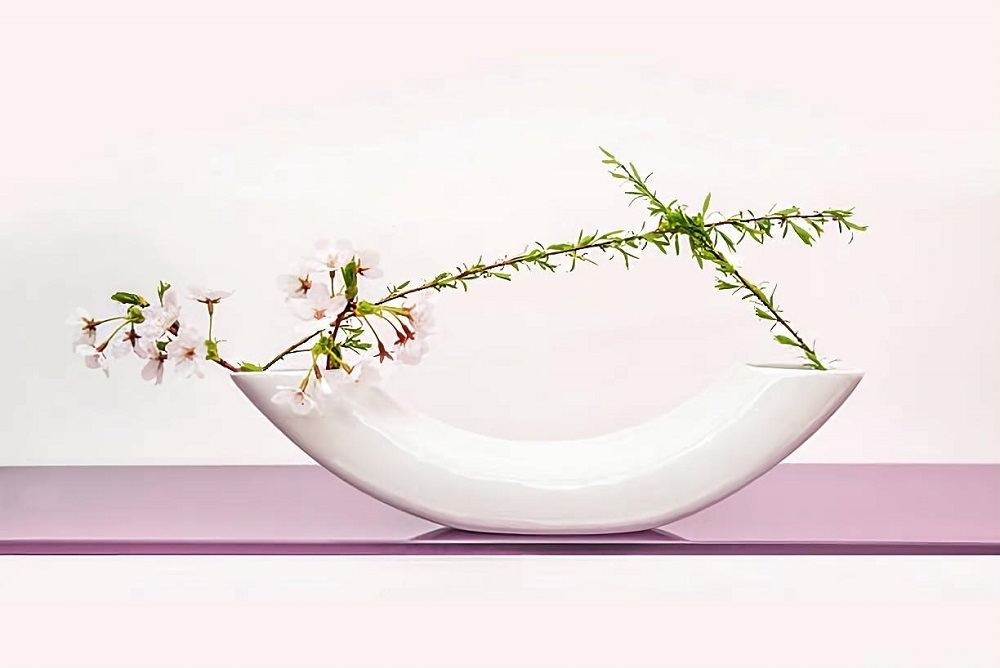
Ikebana is not merely about arranging flowers; it is a profound art form that encompasses an intricate philosophy, embodying Japanese aesthetics, spirituality, and cultural values. At its core, Ikebana seeks to create a harmonious relationship between the artist, the natural materials, and the surrounding space. The philosophy of Ikebana is deeply rooted in several key concepts that guide its practice and inform its aesthetics.
Wabi-sabi
Wabi-sabi is a central concept in Japanese aesthetics, which celebrates the beauty of imperfection, impermanence, and simplicity. In Ikebana, wabi-sabi is manifested through the appreciation of the natural forms of flowers and branches, even those that are irregular or seemingly flawed. By embracing the imperfections in each element, Ikebana practitioners create arrangements that reflect the transient and imperfect nature of life.
Less is More
Ikebana values minimalism and the idea that less is more. The arrangements are often sparse and restrained, with a focus on highlighting the natural beauty of each individual element. By using a limited number of materials, Ikebana artists can create a sense of balance and harmony while allowing each element to shine in its own right.
Ma
"Ma" is a Japanese concept that refers to the space between things, often described as negative space or emptiness. In Ikebana, the space between the flowers and branches is just as important as the materials themselves. By skillfully arranging the materials, Ikebana practitioners create a sense of depth, movement, and dynamic tension within the composition.
Connection to Nature
One of the primary goals of Ikebana is to foster a deep connection to nature. By working with natural materials, practitioners cultivate a sense of gratitude, reverence, and appreciation for the beauty and fragility of the natural world. Moreover, Ikebana encourages mindfulness and contemplation, as practitioners must carefully observe and understand the unique characteristics of each material they work with.
Spiritual Expression
Ikebana is a spiritual practice that transcends the mere act of arranging flowers. It is a form of meditation and self-expression that allows practitioners to explore their inner thoughts and emotions. By creating a harmonious arrangement that reflects their state of mind, Ikebana artists can achieve a sense of inner peace and spiritual fulfillment.
In essence, the philosophy behind Ikebana is a reflection of the deep cultural and spiritual values that underpin Japanese society. By embracing the concepts of wabi-sabi, minimalism, ma, connection to nature, and spiritual expression, Ikebana practitioners can create stunning arrangements that are not only visually appealing but also imbued with profound meaning and symbolism.
Ikebana Techniques and Styles
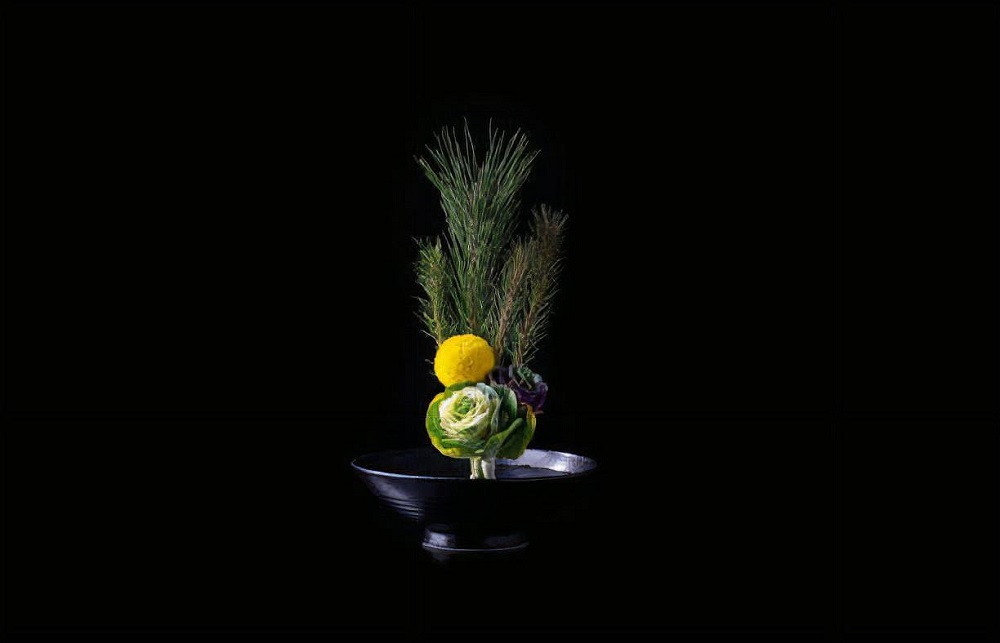
Over the centuries, Ikebana has evolved into a diverse and multifaceted art form, encompassing a wide range of techniques and styles. Each style is characterized by its own unique set of principles, aesthetics, and methods, offering practitioners endless opportunities for creative expression and exploration.
Rikka
Rikka is one of the oldest and most traditional Ikebana styles, originating from the Ikenobo school. It is characterized by a complex, structured arrangement that represents a miniature landscape, incorporating elements such as mountains, valleys, and flowing water. Rikka arrangements often feature a tall central stem or branch, surrounded by shorter stems and foliage to create a sense of depth and perspective.
Shōka
Shōka is another traditional style, focused on capturing the essence of a plant in its most beautiful and natural state. Arrangements in this style are typically more minimalist and restrained than those in the Rikka style, featuring just one or a few types of flowers or branches. The shōka style emphasizes the use of clean, elegant lines and harmonious proportions to create a sense of balance and unity.
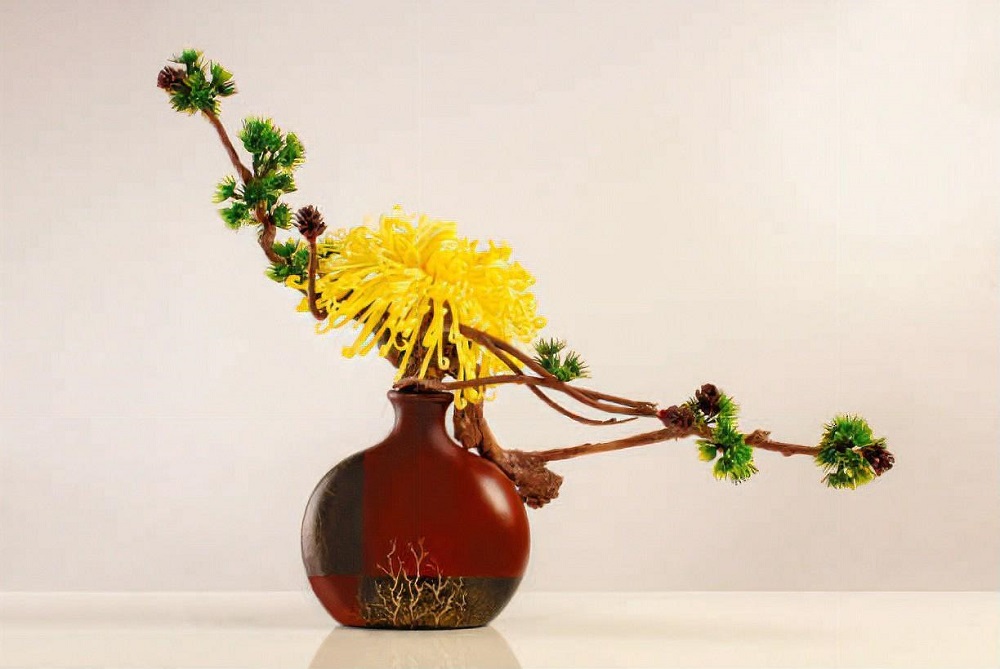
Nageire
Nageire, meaning "thrown-in" in Japanese, is a more spontaneous and free-flowing style of Ikebana. It emphasizes the natural beauty of the materials and their inherent movement, rather than relying on strict rules or structures. Nageire arrangements often appear asymmetrical and dynamic, with a focus on capturing the energy and spirit of the flowers and branches.
Moribana
Moribana, which translates to "piled-up flowers," is a modern Ikebana style that emerged in the late 19th century. It is characterized by the use of a shallow, wide container and the inclusion of a kenzan, a spiked metal holder for securing the stems. Moribana arrangements typically feature a combination of upright and cascading elements, creating a sense of depth and three-dimensionality.
Freestyle Ikebana
As Ikebana has continued to evolve and adapt to modern tastes, freestyle Ikebana has emerged as a popular and innovative approach. In this style, practitioners are free to experiment with unconventional materials, techniques, and arrangements, often resulting in bold and imaginative creations that push the boundaries of traditional Ikebana.
Regardless of the specific style or technique employed, the practice of Ikebana is ultimately about connecting with nature, cultivating mindfulness, and expressing one's creativity. By exploring the various Ikebana styles and techniques, practitioners can develop their own unique artistic voice and deepen their appreciation for the beauty and complexity of the natural world.
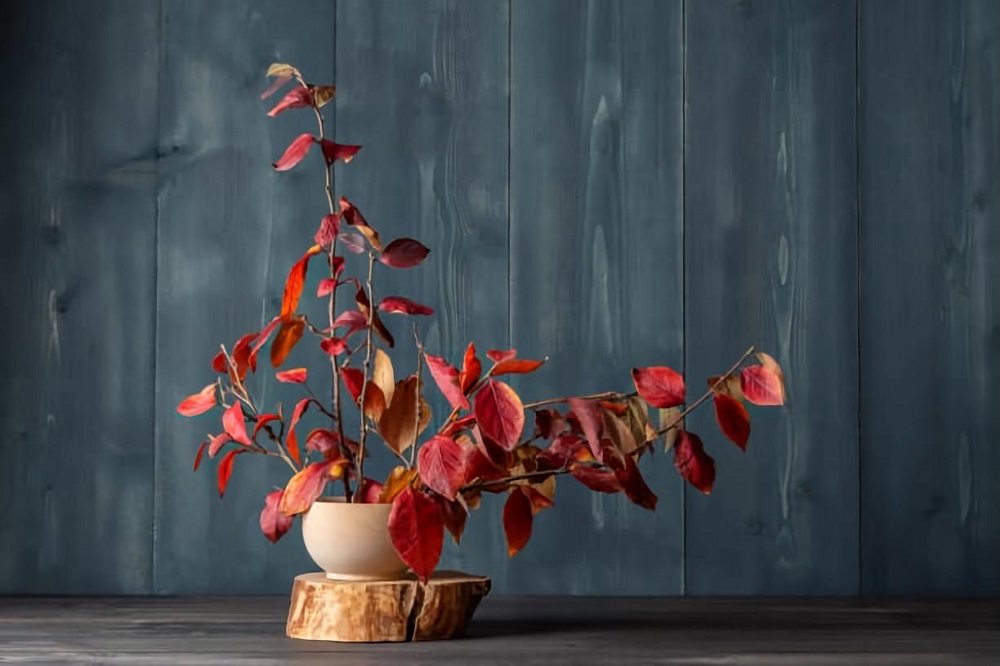
How to Get Started with Ikebana
Embarking on your Ikebana journey can be both exciting and rewarding. With its rich history, diverse styles, and deep philosophical roots, Ikebana offers endless opportunities for personal growth and creative expression. Here are some tips to help you get started with this fascinating art form:
1. Learn the Basics
Before diving into Ikebana, it's essential to familiarize yourself with the basic principles, techniques, and styles. Research the history of Ikebana, explore its various styles, and learn about the key concepts that underpin the practice, such as wabi-sabi, ma, and the connection to nature.
2. Choose Your Materials
Ikebana arrangements can be created using a wide variety of natural materials, such as flowers, branches, leaves, and grasses. When selecting materials for your arrangement, consider factors such as color, texture, shape, and size, as well as the season and the specific style you wish to emulate.
3. Gather Tools and Supplies
To begin practicing Ikebana, you'll need a few essential tools and supplies. These may include:
- A container: Ikebana containers come in various shapes, sizes, and materials. Choose one that complements the materials you plan to use and the style you wish to create.
- A kenzan: This spiked metal holder is used to secure the stems of your arrangement in place.
- Clippers or scissors: Use these to trim and shape your materials as needed.
- A bucket or basin: This is useful for holding your materials and keeping them fresh while you work.
4. Study and Practice
As with any art form, practice is key to mastering Ikebana. Consider taking a class or workshop, either in person or online, to learn from experienced teachers and receive hands-on guidance. Alternatively, you can study books, tutorials, and videos to learn new techniques and find inspiration.
5. Develop Your Own Style
While it's essential to learn and understand the traditional styles and techniques of Ikebana, don't be afraid to experiment and develop your own unique approach. As you gain experience and confidence, you'll be able to express your creativity and personal vision through your arrangements.
6. Join a Community
Connecting with fellow Ikebana enthusiasts can provide valuable support, inspiration, and camaraderie. Consider joining a local Ikebana group or club, or participating in online forums and social media communities dedicated to the art of flower arranging.
7. Share Your Work
Sharing your Ikebana creations with friends, family, or on social media can be a rewarding and motivating experience. By showcasing your arrangements, you can receive feedback, inspire others, and contribute to the vibrant and diverse world of Ikebana.
Getting started with Ikebana involves learning the basics, gathering materials and tools, practicing techniques, developing your own style, and connecting with like-minded individuals. By dedicating time and effort to this art form, you can unlock its many benefits, such as increased mindfulness, a deeper connection to nature, and a unique form of creative expression.
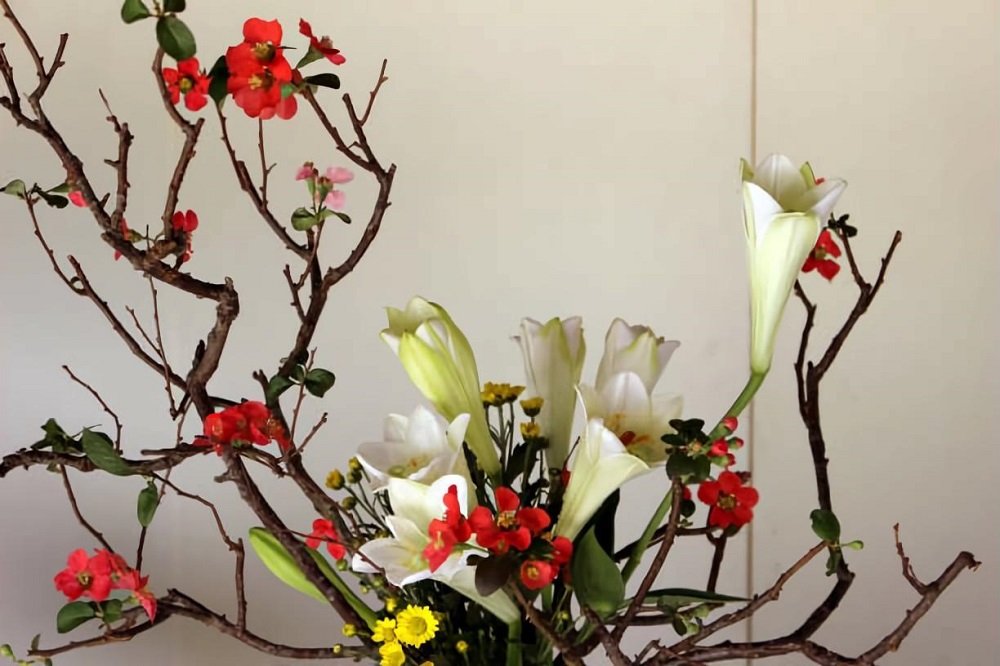
The Benefits of Ikebana
Ikebana is more than just an elegant and sophisticated art form; it also offers numerous benefits for practitioners, contributing to their overall well-being and personal growth. Here are some of the key benefits of engaging in the practice of Ikebana:
1. Enhances Mindfulness and Focus
Ikebana requires a high level of concentration and attention to detail, as practitioners must carefully observe and manipulate each element to create a harmonious arrangement. This mindful approach encourages practitioners to be present in the moment, fostering a sense of calm and clarity.
2. Cultivates Creativity and Self-Expression
Through the process of selecting materials, choosing a style, and arranging the elements, Ikebana practitioners have the opportunity to express their unique vision and creativity. The art form encourages experimentation and innovation, providing a platform for self-expression and personal growth.
3. Promotes Connection to Nature
Working with natural materials, such as flowers, branches, and leaves, Ikebana practitioners develop a deep appreciation for the beauty, complexity, and fragility of the natural world. This connection to nature can lead to increased environmental awareness and a greater sense of stewardship for the earth.
4. Enhances Spatial Awareness and Aesthetic Sensibility
Ikebana places great emphasis on the balance, proportion, and harmony of the arrangement, as well as the interplay between positive and negative space. By practicing Ikebana, individuals can refine their spatial awareness and aesthetic sensibilities, leading to a heightened appreciation for beauty and design in everyday life.
5. Encourages Patience and Perseverance
Creating an Ikebana arrangement can be a challenging and time-consuming process, requiring patience, persistence, and a steady hand. By mastering the various techniques and styles, practitioners develop resilience and perseverance, valuable life skills that can be applied to other areas of their lives.
6. Builds Social Connections
Ikebana can be a social activity, providing opportunities to connect with fellow enthusiasts, share knowledge, and learn from one another. Joining a local Ikebana group or participating in workshops and classes can help foster friendships and create a sense of community.
7. Offers Stress Relief and Relaxation
The practice of Ikebana can be a form of meditation, providing a quiet and contemplative space for individuals to relax and unwind. By focusing on the art of flower arranging, practitioners can escape the stresses of daily life and find solace in the beauty of nature.
In summary, the benefits of Ikebana extend beyond the aesthetic appeal of the arrangements themselves. Practicing this ancient art form can enhance mindfulness, cultivate creativity, promote a connection to nature, develop spatial awareness, encourage patience, build social connections, and offer stress relief. By engaging in Ikebana, individuals can enrich their lives and experience the transformative power of this timeless and captivating practice.
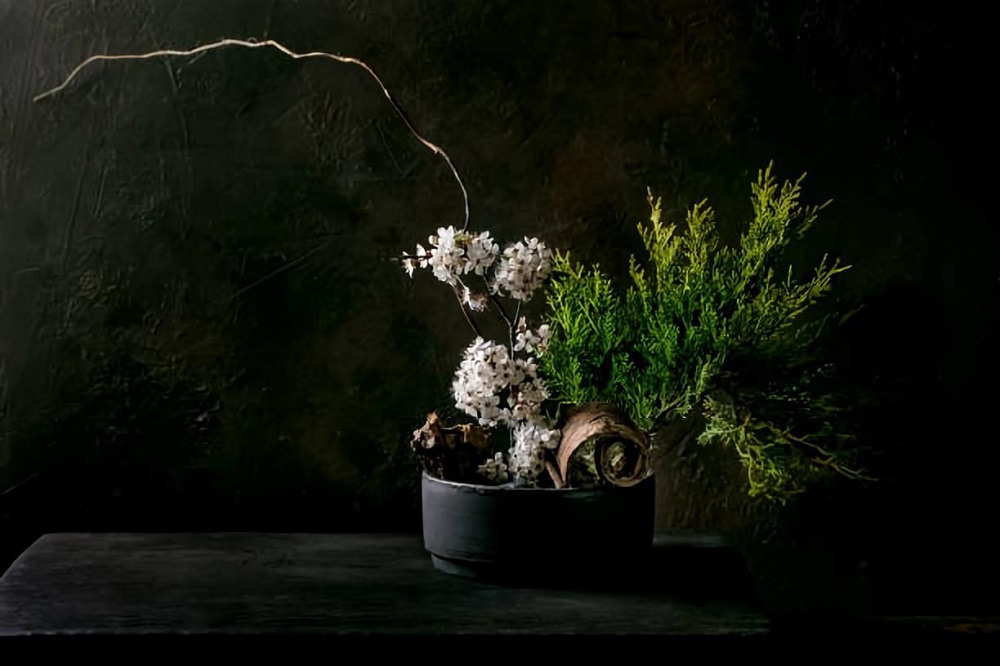
Conclusion
The art of Ikebana offers a unique opportunity to connect with nature, express your creativity, and develop a deeper appreciation for the beauty that surrounds us. By embracing the ancient Japanese practice of flower arranging, you can experience a sense of peace and tranquility, while also honing your artistic skills.
For those seeking to add a touch of elegance and sophistication to their homes, Ikebana arrangements can serve as stunning focal points or conversation starters. Incorporate flowers with medicinal benefits, or create a display that showcases the finest flowers for unsung female heroes to make your Ikebana arrangement even more meaningful.
As you delve deeper into the world of Ikebana, consider experimenting with various styles and techniques, incorporating unique elements such as succulents or planter ideas to make your arrangements truly one-of-a-kind.
Whether you're a seasoned practitioner or a complete beginner, the art of Ikebana offers endless possibilities for personal growth, creative expression, and a deeper connection to the natural world. By immersing yourself in this ancient practice, you can experience the transformative power of nature and unlock your full artistic potential.
Frequently Asked Questions
1. What is Ikebana?
Ikebana is the ancient Japanese art of flower arranging that emphasizes the beauty of each element in the arrangement, including flowers, stems, and leaves. It is rooted in the belief that the act of arranging flowers can bring harmony, balance, and a sense of mindfulness.
2. How did Ikebana originate?
Ikebana has its origins in the 6th century when Buddhism was introduced to Japan from China. The practice of offering flowers to the Buddha inspired the development of Ikebana, which evolved over time into a distinct art form with unique techniques and styles.
3. What is the philosophy behind Ikebana?
The philosophy behind Ikebana is centered around the idea of creating harmony and balance between nature and the individual. It emphasizes the beauty of simplicity, asymmetry, and the natural forms of flowers and plants, as well as the importance of mindfulness and spiritual connection.
4. What are some Ikebana techniques and styles?
There are various Ikebana techniques and styles, including Rikka, Shōka, Nageire, Moribana, and Freestyle Ikebana. Each style has its own set of principles and guidelines that dictate the arrangement's composition and overall aesthetic.
5. How do I get started with Ikebana?
To get started with Ikebana, you will need a few basic supplies, such as a shallow container or vase, a kenzan (a spiked metal frog used to hold stems in place), and floral shears. Begin by choosing the plants and flowers you wish to work with, and then study Ikebana principles, techniques, and styles to guide your arrangements.
6. What are the benefits of practicing Ikebana?
Practicing Ikebana can provide numerous benefits, such as promoting mindfulness, reducing stress, enhancing creativity, improving focus and concentration, and fostering a deeper connection to nature.
7. Where can I find flowers and plants for my Ikebana arrangements?
You can find a variety of flowers and plants suitable for Ikebana arrangements at local florists or online florists like Lilys Florist. They offer a wide range of options, from traditional bouquets to more exotic and unique arrangements.
Blog Categories
Recent posts
- When You’re in Charlotte and They’re in Boone: An Honest Guide to Watauga Medical Center Flower Delivery
- The Alvin TX Bouquet: Why Lilac Surprise Dominates 1 in 3 Orders
- 3 Must Have Plants For Loved Ones In Danville
- What Are Our Most Searched Flowers State by State
- What Is It About New Yorkers Love Of Flowers?
- 4 Flowers You’ll Want to Grow in Your Small Garden
